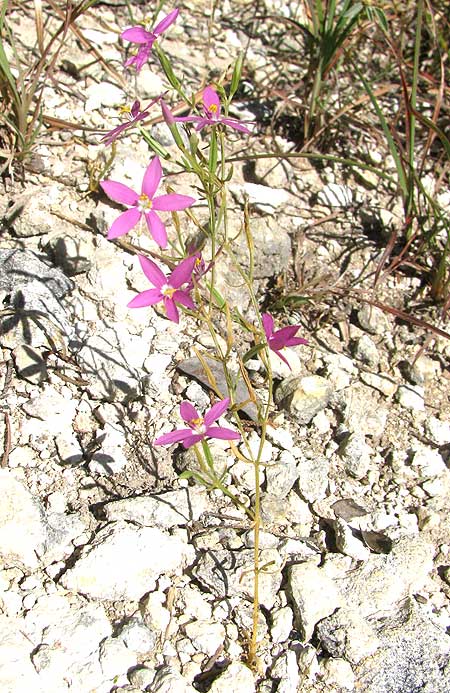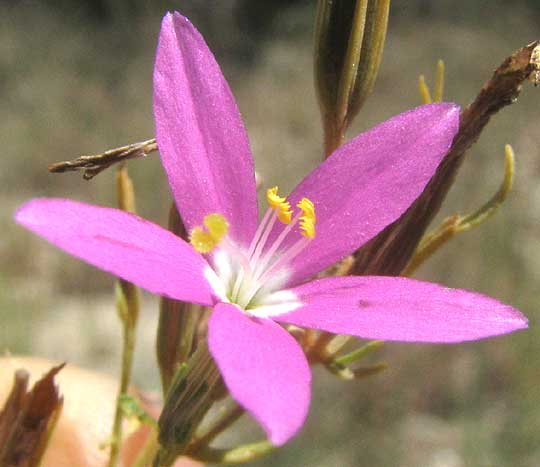Excerpts from Jim Conrad's
Naturalist Newsletter
from the September 16, 2012 Newsletter issued from the valley of the Dry Frio River in northern Uvalde County, southwestern Texas, on the southern border of the Edwards Plateau; elevation ~1750m (~5750 ft); N29.62°, W99.86°; USA
MOUNTAIN PINK
On a hill's lower slope so little soil covered the crumbly limestone that hardly anything but a few wiry, drought-stunted grasses survived. However, right in the middle of this parched glade stood an ankle-high little wildflower bearing more bright, pink blossoms than such a little plant should have, and it looked surprisingly fresh and healthy, as seen below:

How could so few short, narrow leaves photosynthesize enough carbohydrate to produce so many flowers? It can only be that the plant is exquisitely adapted to this harsh environment, like a camel in the desert.
You can see a close-up of a single flower with its five yellow anthers spiraling in an unusual manner, looking like tiny hands, and a large, pale stigma-head held apart from the anthers on a bent style -- better to prevent self pollination -- below:

*UPDATE: In 2012 it was clear that we had a Zeltnera, but deciding on the species was hard, maybe impossible with resources and knowledge at hand. In 2024, many more identification resources are available on the Internet, and I see that even still it can be a challenge, and maybe the taxonomy still isn't well worked out. When I uploaded this page's images to iNatualist, user "rycdaniel," who has made a special study of the genus Zeltnera, recognized Buckley's Centaury, ZELTNERA CALYCOSA, mainly on the grounds that the flowers in our pictures look larger than those of Zeltnera texensis, which I had guessed that they might be. Zeltnera calycosa occurs in central, southern and western Texas west barely into southern Nevada and California, and south through northern Mexico.